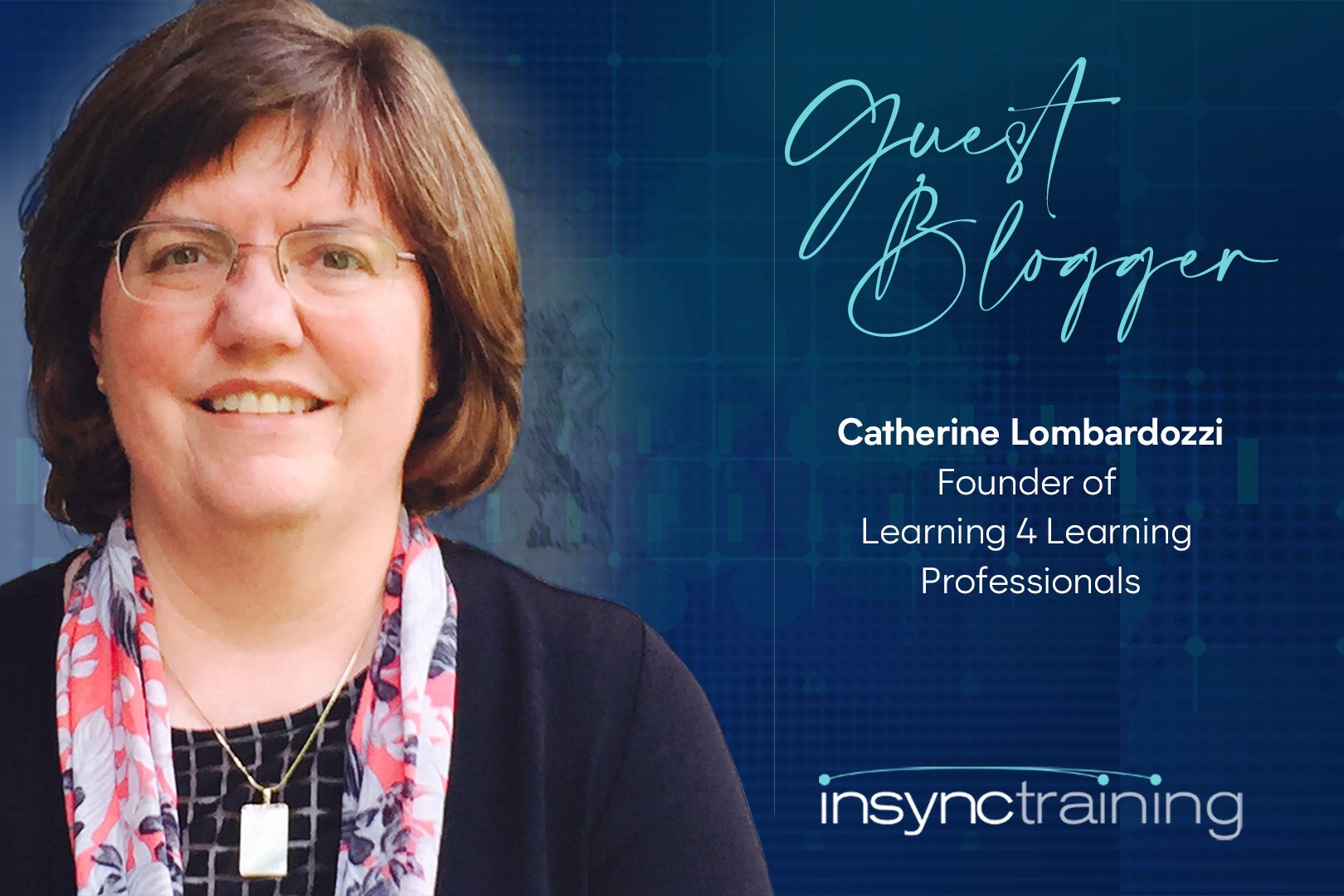How Do You Find the VILT Career Path that Works for You?
Part of InSync Training's Thriving as a Learning Professional Series An accidental career
4 min read
 Catherine Lombardozzi
:
Jan 11, 2024 7:00:00 AM
Catherine Lombardozzi
:
Jan 11, 2024 7:00:00 AM

There’s something about the start of the new year that makes you want to sit up straight, face forward, and pay attention to what is in front of you. When you are driving a car, you need to stay vigilant even while relying on your nearly automatic operation of the vehicle. You keep your hands on the wheel. When you’re managing your career, the same balance applies: you may keep your current job moving in the immediate term, but you need to anticipate the curves and weather changes ahead. You need to be the driver of your own career.

In these times of rising uncertainty on nearly every front, how can you possibly predict the role you might play or the skills you may need so that you can prepare yourself for the future? You can’t. The better question is, how can you be prepared to drive your own career when the road ahead is so obscure? Here are a number of strategies to employ to ensure you are more in control.
At this time of year, it is easy to find predictions, trend reports, and future-oriented insights. Identify and follow those pundits in our field who are well-connected and historically prescient. Look for the deep-dive articles, not the click-bait short lists. Listen to credible sources and consider the implications of their predictions for your own work and life.
Develop some practices for keeping your finger on the pulse all year long. Read industry journals and business press. Go to conferences (live or online). And if you can’t go, check out conference programs to see what’s on the agenda and who you may want to connect with on subjects important to you. Listen to podcasts. Sign up for newsletters and blog post feeds from your favorite thinkers. (My suggestions can be found in Back to the future for the social web.)
Most importantly, develop your network. Talk to people and pool your insights. Some professional organizations have local chapters you can join, and some locales have meet-up groups or learning circles among professionals who have similar career interests. There may even be online places to get connected—LinkedIn groups or private social media groups, for example. You could even start a group of your own by reaching out to colleagues who may want to feel less isolated. In your conversations, focus on emerging ideas and trends and learn about others’ work and ambitions. This kind of mutual support can help all of those engaged to get outside their own bubble.
David Kelly, CEO of Learning Guild, is fond of saying that if we want to know how technology will be used for learning, we should pay attention to how people are using technology in daily life. Let what you and your family and friends do with technology inspire how you can use it to be more productive, more creative, and more impactful. Experiment with and implement those technologies that make the most sense for your context. Set aside a few hours per week or month to play around with the technology that is on the rise.
The trick is to be ready when new technologies overtake your organization. How many L&D people had already been using virtual meeting software well before the pandemic made their organizations finally adopt its use more widely? How many became early users of smart phones long before the industry started calling for mobile-first solutions? How many are now playing with VR headsets and imagining how they might impact our training and development strategies? The future is full of technology and we should be close to the leading edge of it.
Still, with new products emerging every day, it’s impossible to keep up with them all. So check in with your colleagues and your network. Ask people questions and get them to demonstrate their tools for you. Listen for what is being talked about by coworkers. While you are exploring new tools, be sure to seek out critiques; find out a technology’s flaws and check whether there are ethical concerns or privacy or security issues. Be sure to protect your organization’s proprietary information and your own intellectual property as well.
Don’t be afraid to take on new challenges or explore new directions as opportunities arise. You never know which path is going to lead to a better future for you. (After all, how many of us are in “accidental” roles already?)
In the past, the strategy for making career moves entailed figuring out your desired role, identifying the skills needed, and then finding ways to demonstrate or develop those skills. That’s hard to do when future roles are still evolving. Luckily, recent work by Herminia Ibarra (from INSEAD) suggests a more workable strategy for modern careers. (See Working Identity.) Ibarra has discovered that career moves are more often predicated on small moves in experimental directions. In other words, people take on projects and side gigs that interest them and gradually expand their jobs or take on new roles that allow them to do more of the things they enjoy. So go ahead and experiment and see where it leads.
You can also use your current situation to hone broadly applicable skills. Nearly every job description puts a premium on skills like emotional intelligence, communication, creativity, problem-solving, strategic thinking, critical thinking, and learning agility. These abilities can be developed in any role if you choose to attend to them. And they are highly marketable skills, often more valued than the specific technical ones.
To get where you want to be, you have to know what you want. At least once per year, take some time to dive deep into your own head. List your accomplishments and the strengths you have demonstrated. Notice where you really get into the flow, thoroughly enjoying your time on task. Consider the current employment landscape, which roles are hot and which are fading. Imagine the life you want to live. And then envision your future.
For an inspiring retreat, you only need quiet space, a blank journal, a few good conversation partners, and the willingness to give yourself over to this exercise for a substantial time. There are myriad ways to organize such a retreat—over several sessions or condensed in a few days, using structured activities or just a list of questions to ponder, secluded at a retreat location or simply using a meeting room at your office or local library. The important thing is to emerge with renewed clarity and vigor regarding what you want to be doing and how you can position yourself for changes you see coming (however uncertain they may be).
A friend and I have a tradition of holding a personal/professional retreat to consider our plans for the coming year. At this year’s retreat in mid-December, we ran across a big neon sign that inspired what has become my 2024 mantra: “Be not afraid of the enormity of the possible.” I invite you to find your own catch phrase or word of the year (or borrow mine if you like) and use that to remind yourself that the future can be full of promise and that you can take deliberate action to embrace the enormity of what’s possible.
Want to learn more? Download InSync Training's 54-page guide: Thriving As A Learning Professional.

Part of InSync Training's Thriving as a Learning Professional Series An accidental career